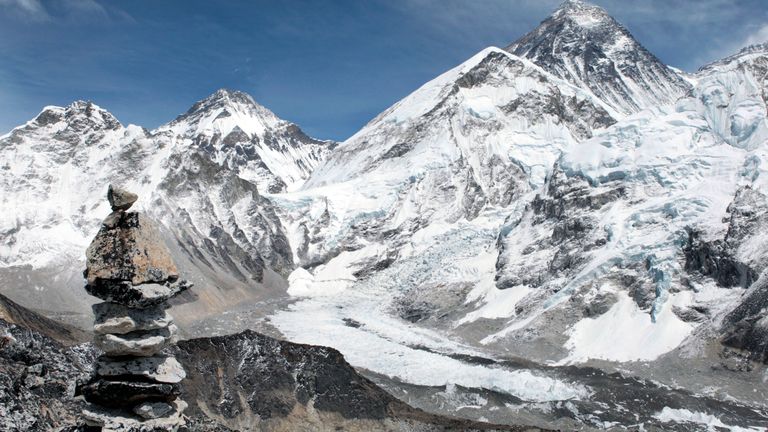Mount Everest has grown by around 15 to 50 metres in the last 89,000 years, and it’s increasing every year. Now, scientists say that’s because the mountain’s water system captured a river.
When the Arun River joined with another nearby river, the new path created the deep Arun Gorge near Everest.
Now, the river network about 46 miles from the mountain is carving away at the substantial gorge, causing the nearby mountain to rise up by as much as two millimetres a year.
“Mount Everest is a remarkable mountain of myth and legend and it’s still growing,” said PhD student Adam Smith, of UCL Earth Sciences, who co-authored the report.
“Our research shows that as the nearby river system cuts deeper, the loss of material is causing the mountain to spring further upwards.”
The tallest mountain on Earth, Mount Everest is 8,849 metres high, and rises about 250 metres above the next tallest peak in the Himalayas.
Today, the Arun River, and the gorge it has created, runs through the mountainous region to the east of Everest and merges downstream with the larger Koshi river system.
Adventurers heading to Everest’s famous base camp will often cross parts of the Koshi on their route.
Over millennia, the river Arun has washed away billions of tonnes of earth and sediment along its banks, creating the deep gorge.
As the huge amount of sediment has been moved away, the land has become lighter and the Earth’s crust has pushed up slowly, leading to Everest’s growth spurt – it’s a process called isostatic rebound, write the study’s authors.
The huge amount of upwards pressure under the crust of the Earth in that area now slightly outweighs the downwards force of gravity.
Everest’s towering height has led to the “interesting” river system in the area, according to the report’s co-author Dr Jin-Gen Dai at UCL Earth Sciences.
“The upstream Arun river flows east at high altitude with a flat valley,” he said.
“It then abruptly turns south as the Koshi river, dropping in elevation and becoming steeper.
“This unique topography, indicative of an unsteady state, likely relates to Everest’s extreme height.”
The growth spurt is not unique to Everest, and also affects neighbouring mountains including Lhotse and Makalu, the world’s fourth and fifth highest peaks respectively.

